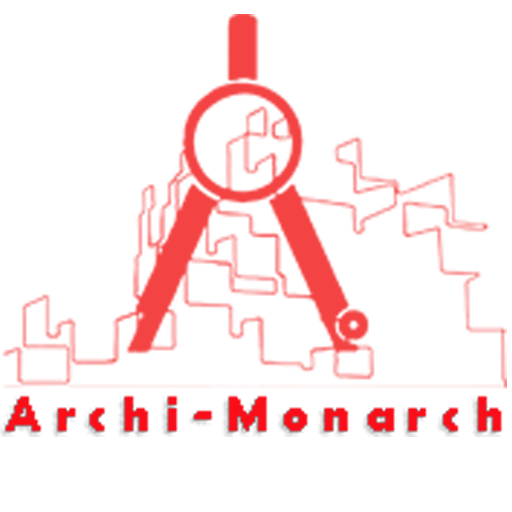A lawn tennis court in architecture refers to a specially designed outdoor space for playing the sport of tennis. Traditionally, a lawn tennis court is constructed using grass as the playing surface, though other materials like clay or hard courts are also common.
The layout typically includes a rectangular area, divided by a net placed at the center, with specific measurements and lines that define the boundaries of play. A lawn tennis court is usually surrounded by fencing to keep the ball within the playing area, and it is often integrated into the design of a sports facility or a recreational park.
The design of the court emphasizes functionality and the smoothness of the playing surface, while aesthetic elements such as landscaping, seating arrangements, and lighting may be incorporated to enhance the experience of both players and spectators.
The quality of the court surface and the maintenance of the space play a critical role in ensuring a suitable playing environment for competitive and recreational tennis.
If you want to know about the submission drawing or miscellaneous detail or interior detail, please click the link.
Image of Lawn tennis court detail and downloadable (in DWG) link below

Lawn tennis court detail drawing – 1
A detailed drawing of a lawn tennis court in construction would focus on all the necessary components that define the court’s structure, dimensions, and materials. Here’s a breakdown of what such a drawing typically includes:
Overall Court Dimensions:
Standard Measurements: A regulation lawn tennis court is 78 feet long and 36 feet wide for doubles play (27 feet wide for singles play). The court is divided by a net into two equal halves.
- Length: 78 feet (23.77 meters)
- Width: 36 feet (10.97 meters) for doubles, 27 feet (8.23 meters) for singles
- Net Height: 3 feet (0.914 meters) at the center and 3.5 feet (1.07 meters) at the posts.
Surface Materials:
The detailed drawing will specify the surface material of the court, which can include:
- Grass: Traditional for lawn tennis courts but requires high maintenance.
- Clay: Common in tennis tournaments like the French Open.
- Hardcourt: Made of asphalt or concrete, often covered with acrylic paint, providing a durable surface.
- Artificial Grass: Modern alternative to natural grass, less maintenance-intensive.
Markings and Lines:
- Baseline: The two lines at the far ends of the court, running parallel to the net, marking the boundary for depth.
- Service Line: The lines that are parallel to the net and 21 feet (6.4 meters) from it, marking the boundary of the service boxes.
- Center Service Line: Divides the service area into left and right sides for serving.
- Sidelines: The lines on each side of the court defining the outer boundary for doubles and singles play.
- Doubles Alleys: These are extra areas (on the outer sides of the court) used during doubles play but not during singles play.
Subgrade and Drainage:
- Subgrade Preparation: The base of the court should be well-prepared to allow for proper drainage and to prevent waterlogging. This often involves a crushed stone or gravel layer.
- Drainage System: A proper drainage system ensures that the court does not accumulate water, which could make it unusable. The drawing will specify drainage slopes, perforated pipes, and stormwater management details.
Net and Posts:
- Net: The detailed drawing will show the exact location for the net, which runs across the center of the court.
- Net Posts: Positioned at each end of the court, they are spaced 3 feet (0.914 meters) from the baseline. The posts should be installed securely, and the drawing will indicate their dimensions and depth in the ground.
- Net Height: It’s important that the net is positioned according to the prescribed height standards.
Fencing and Surrounding Area:
- Fencing: The court is typically surrounded by a protective fence to keep the ball in the court area. The fence height can vary, but it is usually between 10 to 12 feet (3-3.6 meters). The drawing will indicate fence placement and the material to be used (typically chain-link).
- Accessibility: Entrances and gates for players, spectators, and maintenance will be shown in the design.
- Buffer Zones: The drawing might also indicate areas around the court that are not part of the playing surface but are used for safety and viewing.
Lighting:
- Lighting Plan: If the court is intended for nighttime play, the drawing would include the placement of floodlights to provide adequate illumination. The layout of lighting poles, typically at the corners or along the sides, will be shown, with the necessary electrical connections and voltage specifications.
Seating/Viewing Areas:
- Seating Arrangement: If there are spectator areas, the drawing would include details for seating platforms or benches.
- Viewing Areas: Depending on the location, the drawing may include designated areas for spectators, with proper line-of-sight considerations.
Maintenance Areas:
- Storage for Equipment: The construction drawing may designate spaces for storing tennis equipment such as nets, balls, and maintenance tools.
- Watering Systems: For grass or artificial turf courts, a watering system may be necessary, and the plan would include piping and sprinklers.
Surface Finish:
- Finishing Layers: The final layer of surface material would be shown in the drawing. For grass courts, a fine turf surface with specific types of grass, like ryegrass, may be used. For hard courts, acrylic coatings may be applied to create the smooth finish.
Accessibility & Safety Considerations:
- The construction drawing will likely have specifications for safety, including accessible pathways and features for people with disabilities, like wheelchair access points.
This detailed drawing will ensure the proper construction of the court to meet the necessary standards for play and safety.
Our tips to help you improve your architectural Lawn tennis court detailing.
